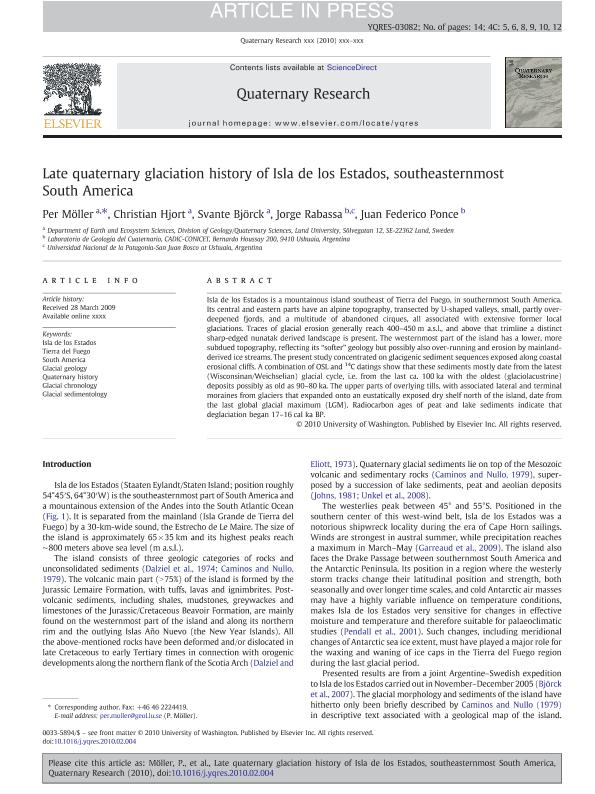Artículo
Late quaternary glaciation history of Isla de los Estados, southeasternmost South America
Fecha de publicación:
05/2010
Editorial:
Univ Washington
Revista:
Quaternary Research
ISSN:
0033-5894
Idioma:
Inglés
Tipo de recurso:
Artículo publicado
Clasificación temática:
Resumen
Isla de los Estados is a mountainous island southeast of Tierra del Fuego, in southernmost South America. Its central and eastern parts have an alpine topography, transected by U-shaped valleys, small, partly over-deepened fjords, and a multitude of abandoned cirques, all associated with extensive former local glaciations. Traces of glacial erosion generally reach 400–450 m a.s.l., and above that trimline a distinct sharp-edged nunatak derived landscape is present. The westernmost part of the island has a lower, more subdued topography, reflecting its "softer" geology but possibly also over-running and erosion by mainland-derived ice streams. The present study concentrated on glacigenic sediment sequences exposed along coastal erosional cliffs. A combination of OSL and 14C datings show that these sediments mostly date from the latest (Wisconsinan/Weichselian) glacial cycle, i.e. from the last ca. 100 ka with the oldest (glaciolacustrine) deposits possibly as old as 90–80 ka. The upper parts of overlying tills, with associated lateral and terminal moraines from glaciers that expanded onto an eustatically exposed dry shelf north of the island, date from the last global glacial maximum (LGM). Radiocarbon ages of peat and lake sediments indicate that deglaciation began 17–16 cal ka BP.
Archivos asociados
Licencia
Identificadores
Colecciones
Articulos(CADIC)
Articulos de CENTRO AUSTRAL DE INVESTIGACIONES CIENTIFICAS
Articulos de CENTRO AUSTRAL DE INVESTIGACIONES CIENTIFICAS
Citación
Möller, Per; Hjort, Christian; Björck, Svante; Rabassa, Jorge Oscar; Ponce, Juan Federico; Late quaternary glaciation history of Isla de los Estados, southeasternmost South America; Univ Washington; Quaternary Research; 73; 3; 5-2010; 521-534
Compartir
Altmétricas




